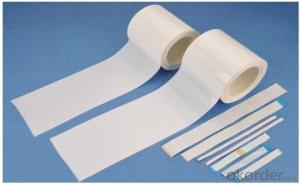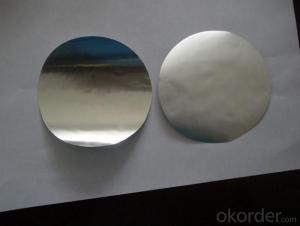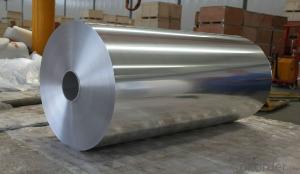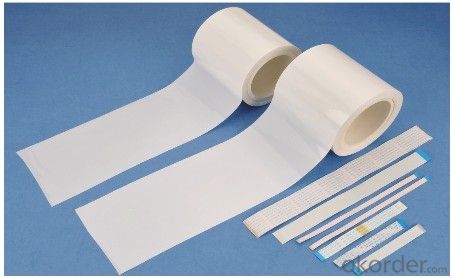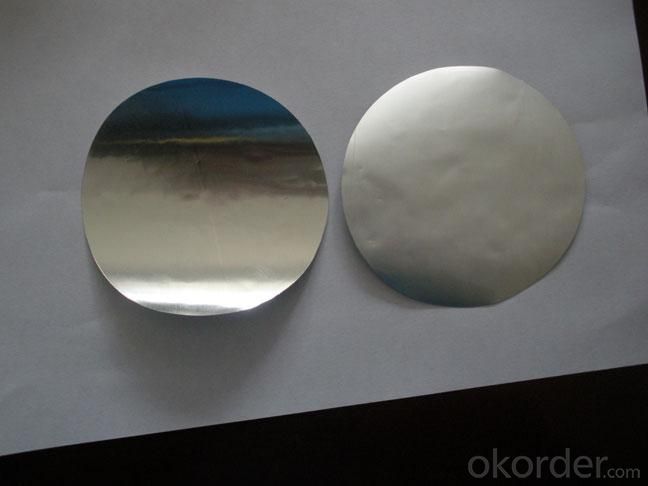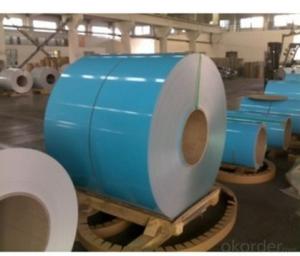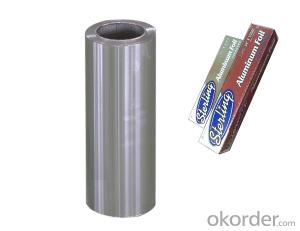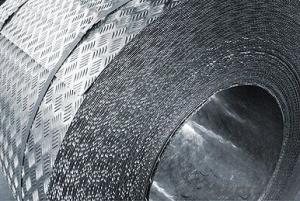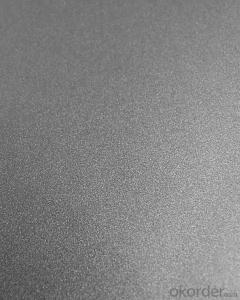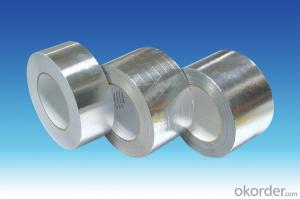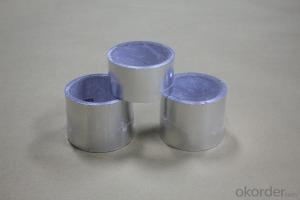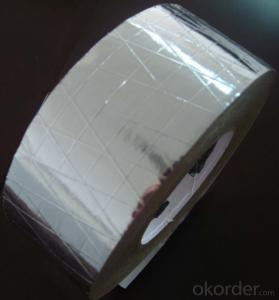Aluminum Foil Tape HAVC Solvent Insulation Self Adhesive Repair Roofing
- Loading Port:
- Shanghai
- Payment Terms:
- TT OR LC
- Min Order Qty:
- 5 m.t.
- Supply Capability:
- 9000 m.t./month
OKorder Service Pledge
OKorder Financial Service
You Might Also Like
Specification
High Quality HAVC Solvent Insulation Self Adhesive Repair Roofing Aluminum Foil Tape
Description
Aluminium tape is suitable for repairs on metallic surfaces such as car body work,
roof and gutter repairs and even insulating pipes. Suitable for applications indoors and outdoors,
it provides a general purpose temperature insulation and is also suitable for sealing of ducts, masking, protecting, repairing and closing.
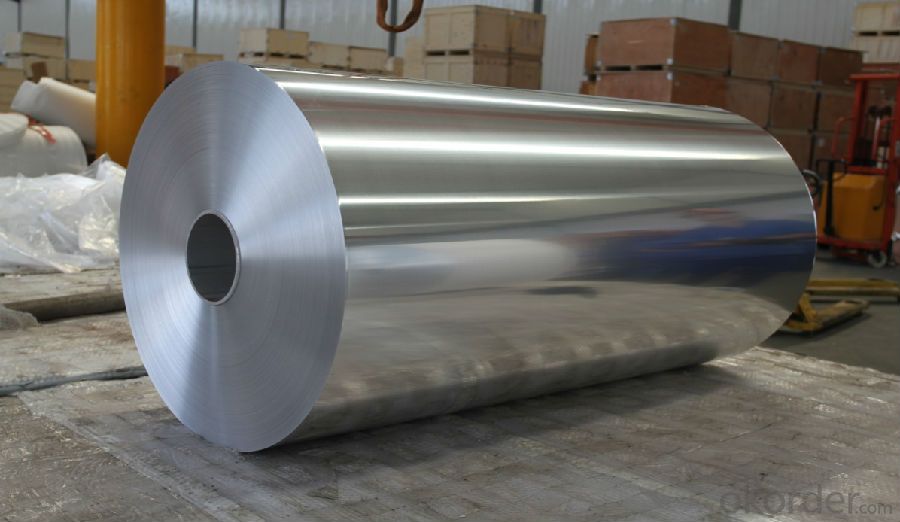
Technical Specification:
• Aluminum backing provides excellent reflection of both heat and light.
• High quality adhesive with strong adhesion and holding power offers permanent sealing and bonding on Foil-Scrim-Kraft Facing joints and seams in HVAC ductwork application.
• Good aging resistance both indoors and outdoors.
• Low moisture vapor transmission rate offers excellent sealing and patching performance
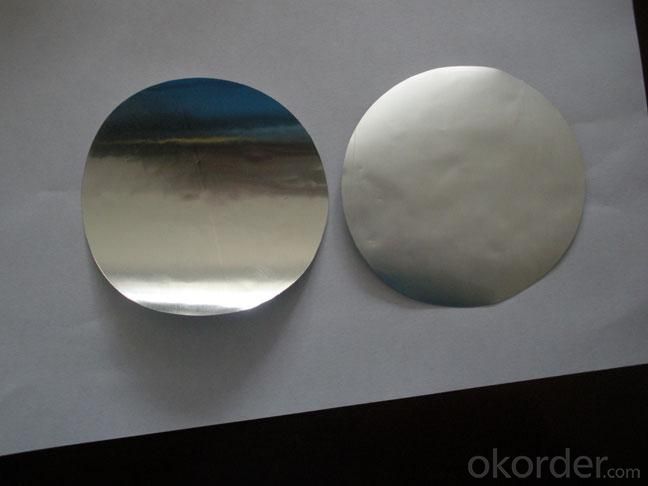
TYPICAL PHYSICAL PROPERTIES
PROPERTIES | METRIC | ENGLISH | TEST METHOD |
Backing Thickness | 50 Micron | 2.0 Mil | PSTC-133 / ASTM D 3652 |
Total Thickness | 90 Micron | 3.6 Mil | PSTC-133 / ASTM D 3652 |
Adhesion to Steel | 20 N/25mm | 72 Oz./In. | PSTC-101 / ASTM D 3330 |
Tack Rolling Ball | 15 cm | 6.0 In. | PSTC-6 / ASTM D 3121 |
Tensile Strength | 75 N/25mm | 17.0 Lb/In | PSTC-131 / ASTM D 3759 |
Elongation % | 3.5 | 3.5 | PSTC-131 / ASTM D 3759 |
Service Temperature | -30 ~ +120 °C | -22 ~ +248 °F | ------------ |
Applying Temperature | +10 ~ 40 °C | +50 ~ +105 °F | ------------ |
TYPICAL APPLICATIONS: HVAC industry for joining and sealing Foil-Scrim-Kraft Facing laminated fiberglass blanket / duct board joints and seams; joining and sealing flexible air duct seams and connections. General purpose holding, patching, sealing and masking applications – indoors and outdoors.
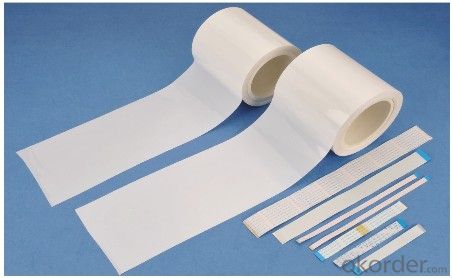
Aluminium tape FORM & SIZE AVAILABLE
Cut Roll: 48 / 50mm (2") / 60 / 63mm (2.5") / 72 / 75mm (3") / 96mm / 100mm (4").
Log Roll: 1200mm x 45 / 50m
Jumbo Roll: 1200mm x 1000m / 1200m
STORAGE & SHELF LIFE: 12 months when stored at 21°C (70°F) / 50% relative humidity out of direct sunlight.
SURFACE PREPARATION: It is essential, as with all pressure-sensitive tapes, that the surface to which the tape is applied must be clean, dry, and free of grease, oil or other contaminants.
PRODUCT USE: It is essential that the user evaluate the product to determine whether it is fit for a particular purpose and user’s method of application. Good results will be obtained when applied to a clean, dry surface with a suitable pressure on product between +10 ~ +40°C (+50 ~ +105 °F).
- Q: This question is asking for a list of different types of fasteners that can be used to attach aluminum sheets to a structure.
- <p>There are several types of fasteners used for attaching aluminum sheets to a structure, including: 1. Rivets: These are permanent fasteners that join two pieces by deforming the rivet material. 2. Screws: These are threaded fasteners that can be inserted and removed as needed. 3. Bolts: Similar to screws, bolts are used with nuts to secure aluminum sheets. 4. Adhesives: Chemical adhesives can be used for bonding aluminum sheets without visible fasteners. 5. Welding: Although not a fastener, welding can join aluminum sheets permanently. 6. Clips and Clamps: These are used for temporary or non-structural attachment. 7. Self-tapping screws: These screws create their own threads in the material being fastened. Each type has its own advantages and is chosen based on the specific requirements of the project.</p>
- Q: This question asks for a list of aluminum sheet types suitable for exterior applications, indicating a need for knowledge on construction materials.
- <p>Aluminum sheets for exterior use come in various types, each with specific properties and applications. Some common types include: 1. Mill Finish Sheets: These have a natural aluminum finish and are corrosion resistant. 2. Anodized Aluminum Sheets: They offer enhanced durability and resistance to weathering. 3. Painted Aluminum Sheets: These are coated with a protective paint layer for improved aesthetics and weather resistance. 4. Embossed Aluminum Sheets: They provide a textured surface and are used for both aesthetic and functional purposes. 5. Perforated Aluminum Sheets: These have holes and are used for ventilation and light filtration. 6. Aluminum Composite Material (ACM) Sheets: These are lightweight and used for cladding due to their strength and low weight. Each type is chosen based on the specific requirements of the project, such as weather conditions, aesthetic preferences, and structural needs.</p>
- Q: I'm trying to use as little aluminum as possible as it can be related to health problems, and I'm just trying to be a little more careful. I just bought the Emerilware pro-clad pot and pan set, and it's stainless steel but says Emerilware Pro-Clad is constructed with an aluminum core bonded between two layers of stainless steel ideal for... Therefore, I'm still cooking with aluminum. Is it safer since it's between 2 pieces of stainless steel? Does any stainless steel cookware not use aluminum? Thanks.
- Aluminum and titanium are lighter, but they are easier to scratch (due to non-stick coatings) and do not hold heat as well. Stainless steel is more durable and distributes heat better. You can also clean it with sand or ice without having to worry about scratching it. If you are going to fry with it, you will need oil since the food will stick without it. When I go ultra light, I use a jet boil with a titanium pot to boil water for cooking. When I want to go gourmet, I use the GSI stainless steel set.
- Q: Are aluminum sheets easy to clean?
- Yes, aluminum sheets are generally easy to clean. Aluminum is a non-porous material, which means that it does not absorb liquids or stains easily. This makes it relatively easy to wipe off dirt, dust, or spills from the surface of aluminum sheets using a damp cloth or sponge. Additionally, aluminum is resistant to rust and corrosion, so it does not require any special cleaning agents or treatments. However, it is important to note that abrasive cleaners or scrubbing pads should be avoided as they can scratch the surface of the aluminum. Overall, with regular maintenance and proper cleaning techniques, aluminum sheets can be kept clean and in good condition for a long time.
- Q: What are the different methods of joining aluminum sheets without welding?
- There are several methods of joining aluminum sheets without welding, including adhesive bonding, mechanical fastening (such as screws or rivets), clinching, and using non-welding techniques like friction stir welding or laser welding.
- Q: Explain how the use of aluminum sheets can impact the energy efficiency of a building.
- <p>Aluminum sheets can significantly affect a building's energy efficiency due to their excellent thermal conductivity and reflective properties. They can be used in building construction to form a barrier against heat transfer, reducing the need for heating and cooling. Additionally, aluminum's reflective surface can help in reflecting sunlight, thereby reducing heat gain in the building. However, if not properly insulated, aluminum's high conductivity can lead to heat loss, reducing energy efficiency. Therefore, the use of aluminum sheets in buildings often requires a balance between their heat-reflective and heat-conductive properties to optimize energy efficiency.</p>
- Q: What are the various kinds of aluminum sheets utilized in the manufacturing of automobiles?
- <p>Aluminum sheets are widely used in automobile manufacturing due to their lightweight and strength. The different types include: 1. 5000 series aluminum sheets, known for their good formability and corrosion resistance, often used for body panels. 2. 6000 series aluminum sheets, which are strong and used for structural components. 3. 7000 series aluminum sheets, known for their high strength-to-weight ratio, used in safety-critical parts. 4. Aluminum alloy sheets, which combine the properties of aluminum with other elements for specific applications. 5. Aluminum clad sheets, which have a corrosion-resistant layer on the surface. These types are chosen based on the specific requirements of each automotive component.</p>
- Q: How to clean the aluminium oxide on the surface of aluminum? What kind of materials should we use to clean the thin aluminum sheet, and what's the concentration?
- you can answer sodium hydroxide solution, dilute acid is useless, aluminum's oxide film is very thick,as for concentration, aluminum will be passivating in concentrated sulfuric acid. if you are high school student,higher concentration is better, you can complete deoxidation by abrasive paper.
- Q: Can aluminum sheets be used for roofing applications?
- Yes, aluminum sheets can be used for roofing applications. Aluminum is a durable and lightweight material that offers excellent resistance to corrosion, making it suitable for use in roofing. It is commonly used in residential and commercial roofing projects due to its longevity and ability to withstand various weather conditions.
- Q: Aluminum plate belongs to steel or non ferrous metal?
- Of or consisting of pure aluminum or aluminum alloy material made by pressing (cutting or sawing); a rectangular material with a rectangular cross section and a uniform thickness. See China ferroalloy on line
Send your message to us
Aluminum Foil Tape HAVC Solvent Insulation Self Adhesive Repair Roofing
- Loading Port:
- Shanghai
- Payment Terms:
- TT OR LC
- Min Order Qty:
- 5 m.t.
- Supply Capability:
- 9000 m.t./month
OKorder Service Pledge
OKorder Financial Service
Similar products
Hot products
Hot Searches
Related keywords
